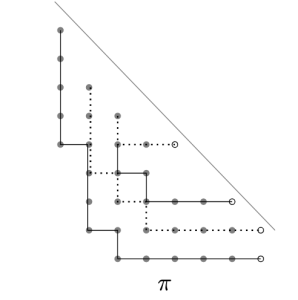Presented By: Combinatorics Seminar - Department of Mathematics
Combinatorics Seminar -- Dens, nests, and Catalanimals: a walk through the zoo of shuffle theorems
George Seelinger -- University of Michigan

In the past few years, significant progress has been made in proving "shuffle theorems": equations that express an algebraically defined operator on a symmetric functions as a q,t-weighted sum over some kind of combinatorial object. In 2005,
Haglund-Haiman-Loehr-Remmel-Ulya posed The Shuffle Conjecture, expressing the image of the $\nabla$ operator on an elementary symmetric function as a q,t-weighted sum over parking functions, that is, tableaux on Dyck paths. A decade later, Carlsson-Mellit proved the shuffle conjecture, but not before much work had been done discovering various conjectural generalizations of the shuffle conjecture. One such conjecture is the Loehr-Warrington conjecture, giving a combinatorial description of the image of $\nabla$ on any Schur function. In joint work with Jonah Blasiak, Mark Haiman, Jennifer Morse, and Anna Pun, we give a "Catalanimal", or an infinite series of GL_n-characters, whose polynomial part gives a scalar multiple of $\nabla s_\lambda$. Furthermore, this realization lends itself to the combinatorics of what we call "nests" which are controlled by "dens." This approach allows us to establish and generalize the Loehr-Warrington conjecture.
Haglund-Haiman-Loehr-Remmel-Ulya posed The Shuffle Conjecture, expressing the image of the $\nabla$ operator on an elementary symmetric function as a q,t-weighted sum over parking functions, that is, tableaux on Dyck paths. A decade later, Carlsson-Mellit proved the shuffle conjecture, but not before much work had been done discovering various conjectural generalizations of the shuffle conjecture. One such conjecture is the Loehr-Warrington conjecture, giving a combinatorial description of the image of $\nabla$ on any Schur function. In joint work with Jonah Blasiak, Mark Haiman, Jennifer Morse, and Anna Pun, we give a "Catalanimal", or an infinite series of GL_n-characters, whose polynomial part gives a scalar multiple of $\nabla s_\lambda$. Furthermore, this realization lends itself to the combinatorics of what we call "nests" which are controlled by "dens." This approach allows us to establish and generalize the Loehr-Warrington conjecture.